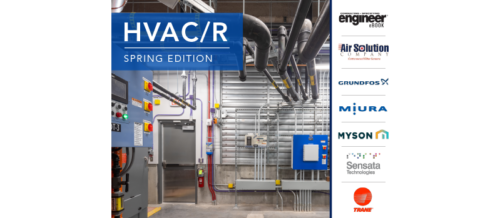Getting it right in mixed-use buildings: Codes and standards
Mixed-use buildings—often a combination of retail and residential—are unique structures with varying needs. A variety of codes and standards dictate building design.
Respondents
Michael Albanese, PE, LEED GA, Senior Associate, Kohrs Lonnemann Heil Engineers, Fort Thomas, Ky.
David Callan, PE, CEM, HBDP, LEED AP, QCxP, Vice President, McGuire Engineers, Chicago
Donna Miller, PE, PEng, LEED AP, Vice President, Engineering, WD Partners, Dublin, Ohio
Gary Poole, PE, Principal, Bury Inc., Houston
Andrew H. Smith, PE, CEM, LEED AP, Principal, Jordan & Skala Engineers, Dallas
CSE: Please explain some of the international codes, standards, and guidelines you use as a guide on mixed-use buildings.
Poole: While no code or standard can address all situations, we have found that the international family of codes (International Fire Code, for example) is a very good basis to begin the design of projects. From there, it really varies on a case-by-case basis, taking into account city codes and a client’s certification goals (LEED, etc.).
Smith: Projects shall comply with applicable codes and local amendments. In addition, ASHRAE and local green codes need to be considered.
Miller: Codes, guidelines, and standards used for international projects vary much in the same way that codes, standards, and guidelines vary by state. Some of the codes that we use for our Canadian projects are the National Plumbing Code of Canada, the Canadian Electrical Code, and the National Building Code of Canada.
CSE: How have International Building Code, NFPA, ASHRAE, and other codes affected your work on mixed-use projects? What are some positive/negative aspects of these guides?
Callan: Being a contrarian by nature, I am sometimes perplexed by the actions of my colleagues who participate in the creation and maintenance of codes and standards. For instance ASHRAE Standard 90.1: Energy Standard for Buildings Except Low-Rise Residential Buildings and ASHRAE Standard 62.1: Ventilation for Acceptable Indoor Air Quality have become so arduous to use, I often wonder if my friends should consider a career shift to writing tax code for the IRS. The wall in my office has a slight indentation from where I have occasionally banged my head upon reading the latest amendments to these fine documents.
Smith: The IBC codes are changing faster than engineers and cities can read and put them into effect. Often there are conflicts between the codes requiring international code council interpretation. The ventilation changes to codes over the past few years have resulted in increased mold and pollutant concerns and added to the cost of construction. Code has advanced faster than technology, placing greater liability on the owner and design team.
Do you have experience and expertise with the topics mentioned in this content? You should consider contributing to our CFE Media editorial team and getting the recognition you and your company deserve. Click here to start this process.





